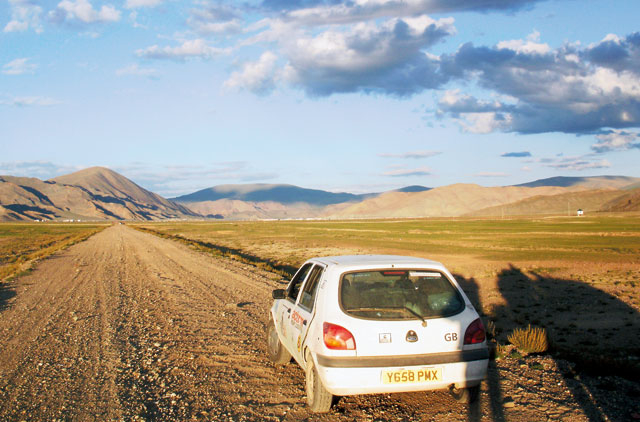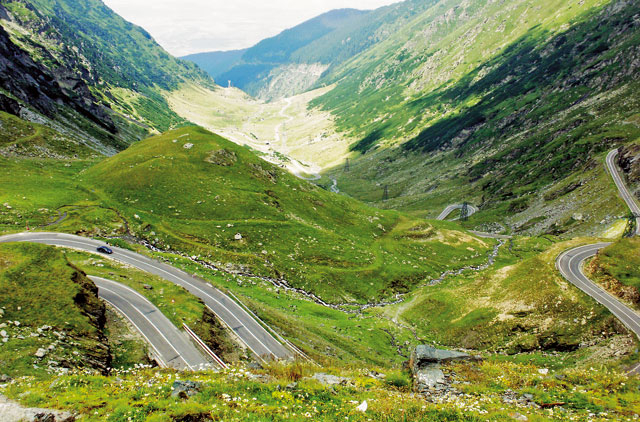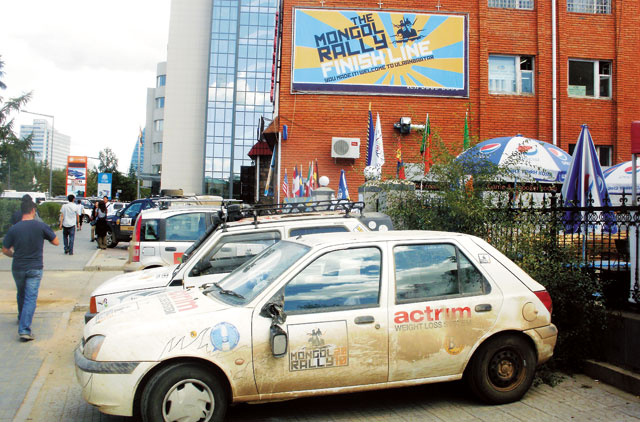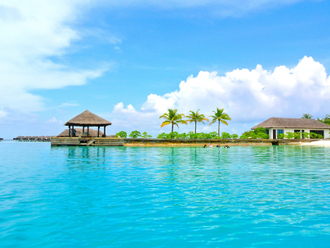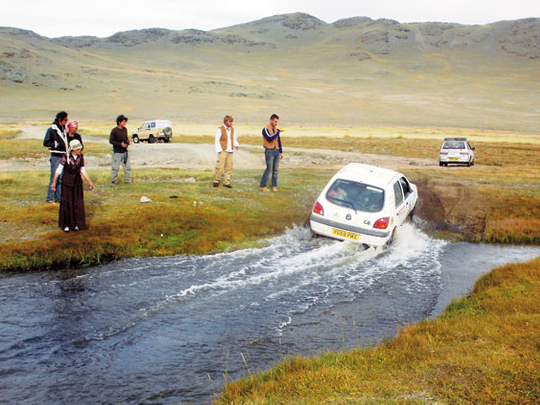
If you had asked me a year ago whether I would like to spend six weeks crammed into a little car with two other fellows traversing the 10,000-odd kilometres between England and Mongolia, I would probably have asked if you were crazy.
But for the past seven years enterprising - and foolhardy - folk from different countries have done just that: put their lives on hold each summer to partake in the adventure known as the Mongol Rally.
The term ‘rally' is used in the broadest sense here. The objective is to drive from England to Ulaanbaatar, the capital city of Mongolia, a trip which could take between three and eight weeks; those who get there are the winners!
The rules of engagement are as follows: the engine of your chosen vehicle must be less than 1.2 litres, and each team must raise £1,000 for their chosen charity. And that's it. Over 400 teams from countries ranging from Portugal to Canada took part in the event last year.
The vehicle of choice for me and my team mates, Georges and Jon, was a 2001 Ford Fiesta which we named Faris. Cramped for room and already low on the suspension, we set off on our chosen path from Goodwood Racing Circuit in southern England on July 24. Our intended route would see us navigate through 16 countries en route to the finish line in Ulaanbaatar.
Our passage through Central and Eastern Europe was, for the most part, uneventful, due to the pristine asphalt roads and regular availability of amenities. This is with the exception of Romania where we experienced some of the worst road conditions I have ever come across, but this merely added to its charm and enjoyment.
When the BBC television show Top Gear named Romania's Transfagarasan mountain pass "the best road in the world", it was because of its continuous twists and chicanes, cliff-edge hairpins and breathtaking scenery, rather than the condition of its tarmac.
Unlike Europe, travel through Central Asia and beyond has been much less documented and this was where the adventure really began to take shape. So skipping forwards a few more countries I begin at Istanbul.
Tasting Turkish hospitality
Istanbul is the obligatory point of congregation for the smaller percentage of ‘rallyists' taking the much more intriguing, and allegedly more precarious, southern route. But driving into the heart of the city was nothing short of a nightmare. Navigating into the district of Sultanahmet, however, was a different matter entirely. After several wrong turns and incomprehensible local directions we arrived at our destination a couple of hours later. At our hostel we met Dan and Pascoe and we would convoy with them more or less for the rest of our journey. They drove Sadie, a 2002 Suzuki Swift.
Istanbul came across as a very friendly place but it was on our first night outside the city that we encountered the true extent of Turkish hospitality in a small village near Osmancik.
We were greeted by the family of an elderly Turkish shepherd and were invited to dine with them in their house. It turned out to be four courses comprising entirely local produce.
This heart-warming experience was only dampened when we returned to find the local Jandarma equipped with rifles snooping around our cars and tents.
It turned out they were more curious than anything and we left on good terms after getting them to sign their names on Dan and Pascoe's car and having photographs taken with them.
It took us six days to cross the breadth of Turkey.
Anxiety writ large
Until we reached Iran we had not experienced any real difficulty at borders. But at the Iranian border we did have some difficulty, not from the authorities themselves, but from ‘fixers' on either side of the border who forcibly tried to get us to exchange money or pay phoney ‘taxes'.
The chance and circumstance of the event left me confused after the warm hospitality we had experienced just across the border in Turkey. But this was soon to change.
I was born in Dubai and lived there for a several years, and I have travelled all over Europe and Latin America, but I have never experienced a landscape likev that of northern Iran.
I find it hard to describe, but it is what I imagine Mars to be like - jagged hills made up of many shades of red, with strikingly pink sunset skies. With our foreign number plates and well-decorated cars we stood out like a sore thumb and so attracted a lot of attention.
Next stop was Turkmenistan. Even before we had set foot in the country we were already on edge.
At the border there were a couple of Swiss rally teams, and one member was being forcibly escorted through the gates into no-man's-land because he was not on the official ‘guest list' to be admitted into the country.
We therefore had an extremely nervous wait to see if we were on the said guest list. Thankfully we were.
We were now in the company of a team of three Norwegians, Dag, Bjornar and Tor, driving a Fiat Doblo, as we headed into the great unknown that is Ashgabat, the country's capital. Driving through the mountains down into the city the scenery was spectacular.
We had been warned that the roads leading out of the country and into Uzbekistan would be bad; we soon realised that they were worse than we could have imagined. Enormous potholes combined with switchback bumps hurt Faris' suspension, and after three days of enduring this torture we were very ready to leave the country.
A breath of fresh air
When we finally found our way into Uzbekistan it was a breath of fresh air. Normality resumed when we were greeted with warmth by the country's inhabitants and we felt much more at ease. We spent a week traversing the country and visited the towns of Bukhara, Samarqand and Tashkent, which rated among my favourite towns of the journey.
Technical troubles
Our troubles really began a couple of hours outside Almaty, Kazakhstan. We had noticed in Uzbekistan that our engine had started to make strange sounds but ignored it. About 30 kilometres outside the city we started losing power.
Luckily by this point we were being accompanied by a team of three Americans who towed us to a garage in town. The diagnosis from Alexey, the head mechanic at the garage, was "problem". As the Kazakh gentleman spoke very little English, a lot of what he explained was unfortunately lost in translation, but we understood that we had blown the head gasket. Through drawings and hand gestures we gathered that he could fix it to an extent. We faced a week of driving in Kazakhstan leading up to the Russian border through truly uninhabited territory, so taking a car that was on the brink of expiring was a serious gamble. But we took it.
This meant that we had to rough it out for a few days. All the time we were on the road we were constantly worrying when the blown gasket would start to throw up problems all over again. Nevertheless, after a few days' overnight driving and remarkable sunsets, we were surprised to find ourselves at the Mongolian border.
‘Off-road' driving
Mongolian roads are really non-existent. We were now doing true off-road driving and it finally felt like a proper rally. We felt reaching Mongolia was an achievement. Out of over 400 competitors, fewer than 150 reached the final checkpoint.
Would I do it again? Maybe not, but I have plenty more adventures to look forward to in my life.
(Evans and his team raised £2,500 pounds for Christina Noble Children’s Foundation in Ulaanbaatar)
Inside info
Evans' car had a smashed headlight, two broken-off wing mirrors and a leak in the tank.
Jeremy Evans is a UK-based student


